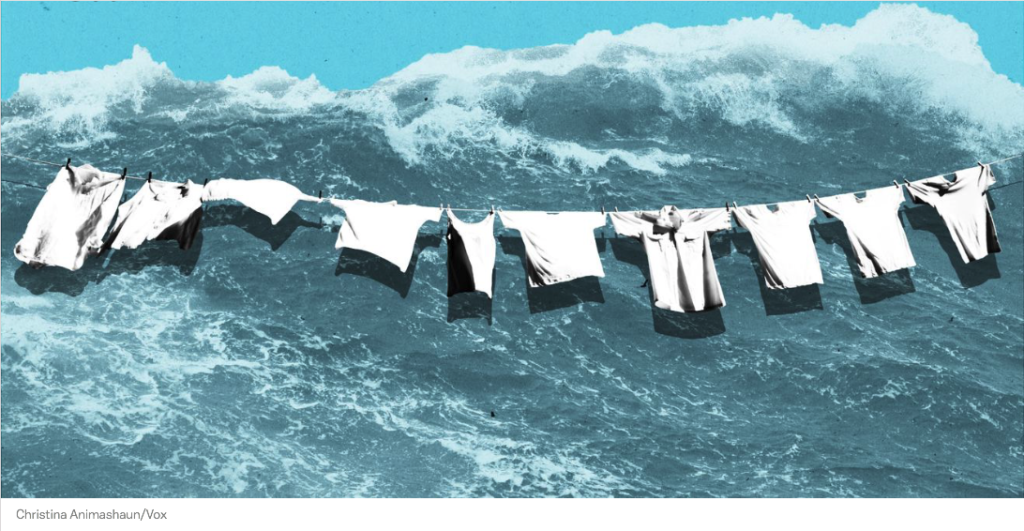
How much plastic is your washing machine sending out to sea?
t’s no secret that too many of the plastic products we use end up in the ocean. But you might not be aware of one major source of that pollution: our clothes.
Polyester, nylon, acrylic, and other synthetic fibers — all of which are forms of plastic — are now about 60 percent of the material that makes up our clothes worldwide. Synthetic plastic fibers are cheap and extremely versatile, providing for stretch and breathability in athleisure, and warmth and sturdiness in winter clothes.
These fibers contribute to ocean plastic pollution in a subtle but pervasive way: The fabrics they make — along with synthetic-natural blends — leach into the environment just by being washed. Estimates vary, but it’s possible that a single load of laundry could release hundreds of thousands of fibers from our clothes into the water supply.
And these tiny fibers — less than 5 millimeters in length, with diameters measured in micrometers (one-thousandth of a millimeter) — can eventually reach the ocean. There, they’re adding to the microplastic pollution that’s accumulating in the food chain and being ingested by all sorts of marine wildlife, and even us. Most of the plastic that’s in the ocean, in terms of number of pieces, is not in the form of whole products like cups or straws, but instead broken-down shreds of plastic.
“Think about how many people are washing their clothes on a daily basis, and how many clothes we all have,” says Imogen Napper, a marine scientist at the University of Plymouth who co-authored a 2016 study on the plastic fibers that shed from our clothing. “Even when we’re walking around, not washing our clothes, tiny fibers are falling off. It’s everywhere.”
Worldwide, there are now vigorous efforts to reduce the use of some of the products that end up in the oceans, like plastic cups and shopping bags. (Perhaps you’ve heard of plastic straw bans.) As we seek solutions to the overall issue of plastic pollution, we need to recognize that our clothing is a major part of the problem and will need to be part of the solution as well.
Much of the microplastic problem is a plastic clothing problem
Consider the lint you collect in the dryer. That lint is tiny bits of thread from your clothing that have become dislodged and are caught by a mesh screen.
Similarly, synthetic fibers come off in the wash — but they’re so small, and there’s no filter inside the machines to catch them. Instead, these tiny plastic fibers pass through to sewage treatment plants, which often don’t have filters fine enough to catch them. (And if they do, the fibers may end up in another sewage byproduct: fertilizer.) Treated wastewater is then often dumped into rivers or the sea, carrying plastic clothing fibers with it, as a 2011 study found.
In 2016, Napper and a colleague designed a test to see how many of these fibers could be shed in the wash. They fitted a Whirlpool front-loading washing machine with a special filter to collect tiny fibers. They tested swatches of three types of fabric: a polyester-cotton blend T-shirt, a polyester hoodie, and an acrylic sweater. After a few washes (all garments shed more when they are brand new), the acrylic fabric shed the most, followed by the polyester, and then the poly-cotton blend.
Find the Vox article here




